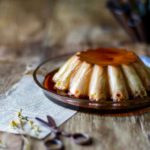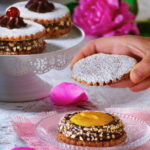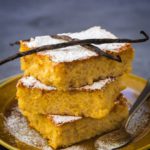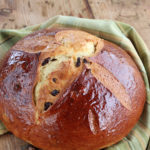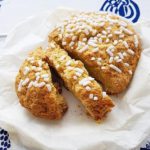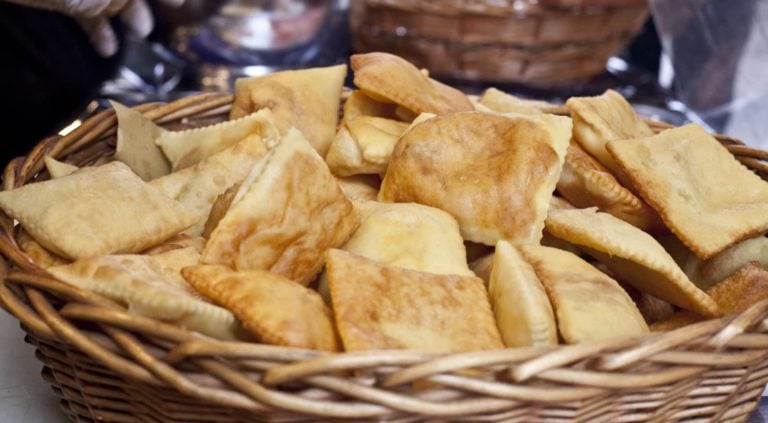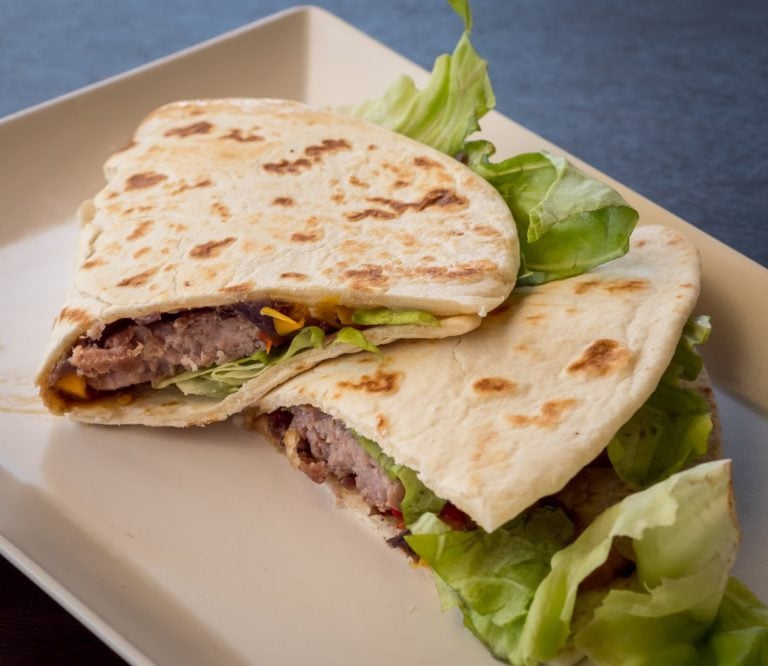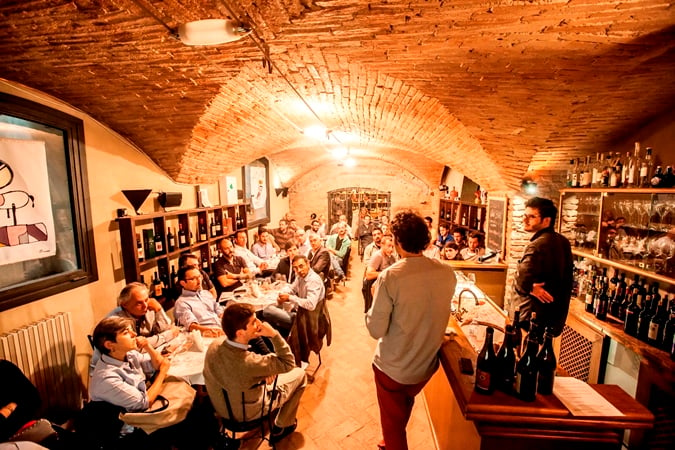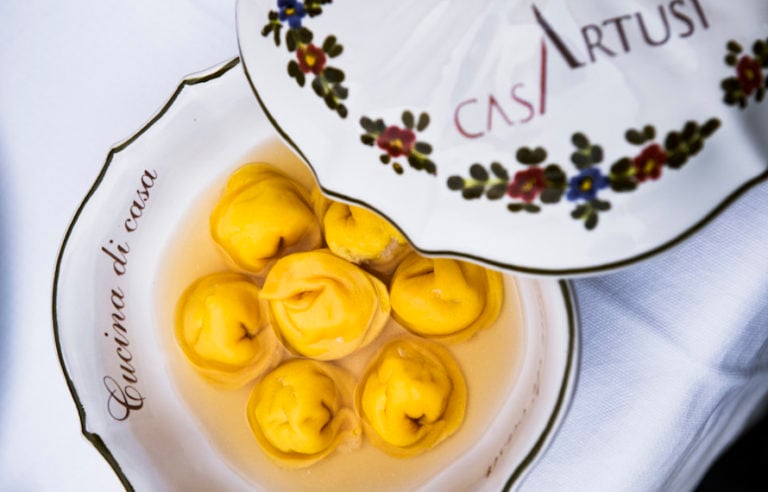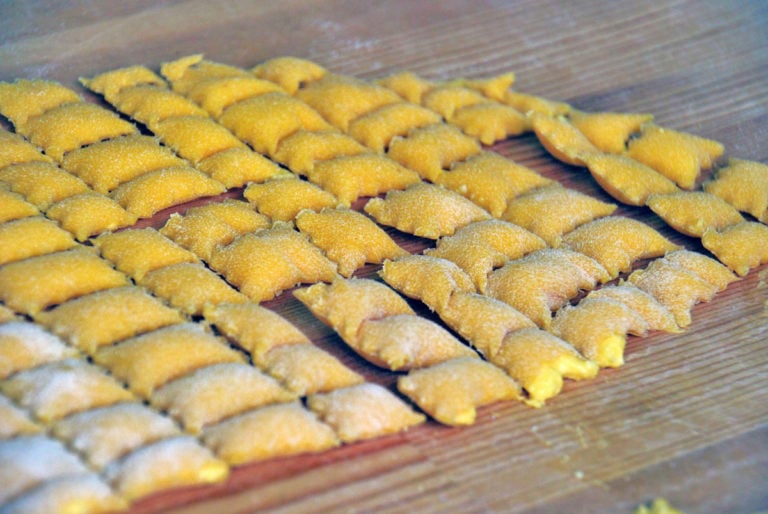It only takes a few simple ingredients to recreate at home the tastiest and oldest traditional Easter sweets of Emilia-Romagna.
From the pagnotta romagnola to the gialletti of Ravenna, from the rice cake of Bologna to the colomba of Pavullo, all the way to the zuccherini of Ferrara of Jewish origin and the cake loved by the Grand Duchess Maria Luigia of Austria, every recipe is good to be experienced in person and to spend Easter days sweetly, together with the people you love most.
In Emilia-Romagna, Easter is a very heartfelt celebration and even today, in the days leading up to Sunday, families prepare typical local sweets at home. Some preparations have very ancient origins.
They derive from pagan festivals that were celebrated to greet the arrival of spring and new life. Certainly these traditional sweets bring a breath of lightness to the table.
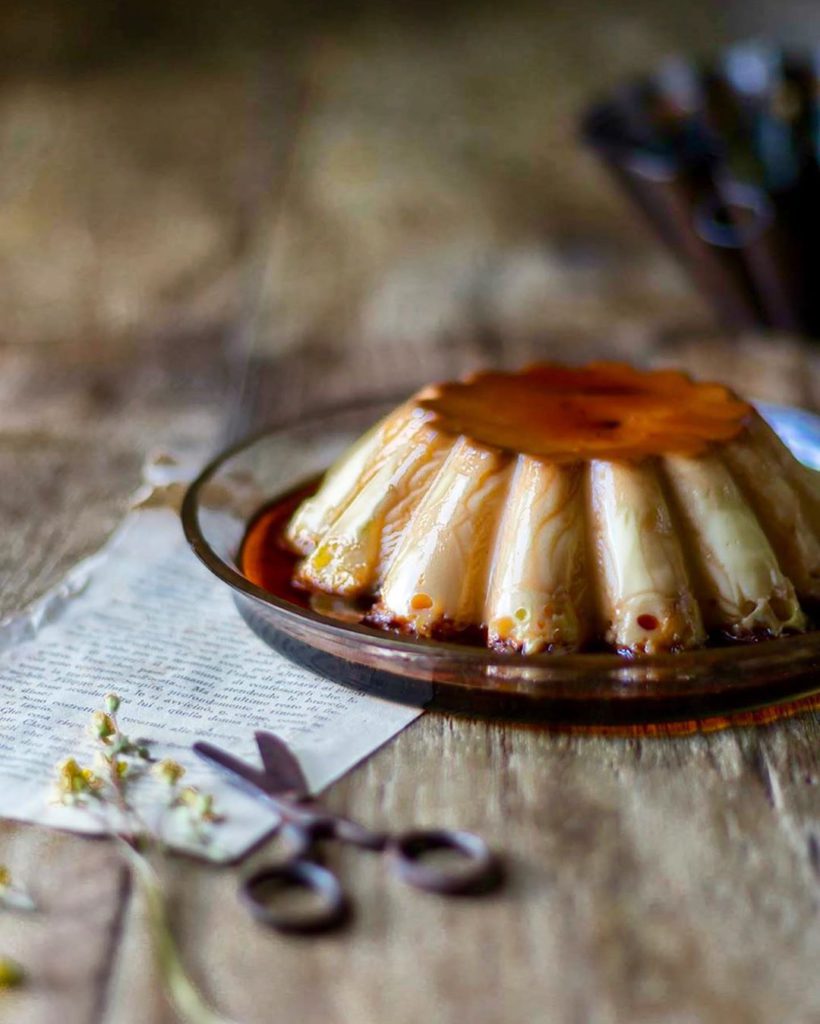
Latte in piedi | Ph @thediaryofsonia
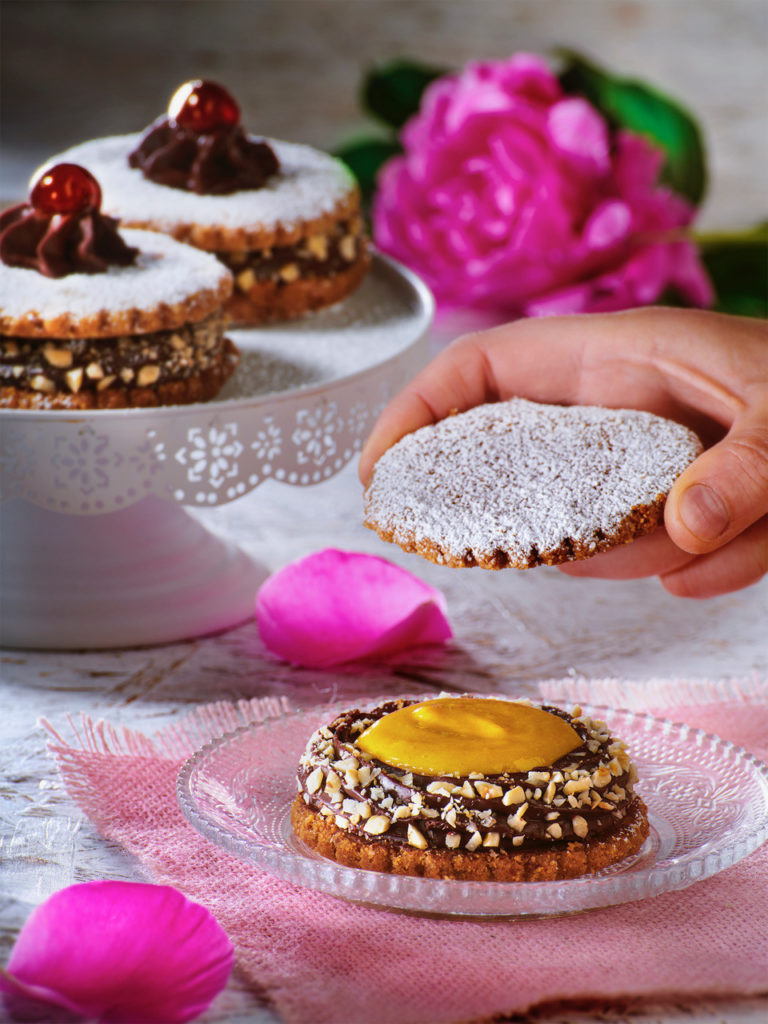
Maria Luigia Cake | Ph @afroditaskitchen
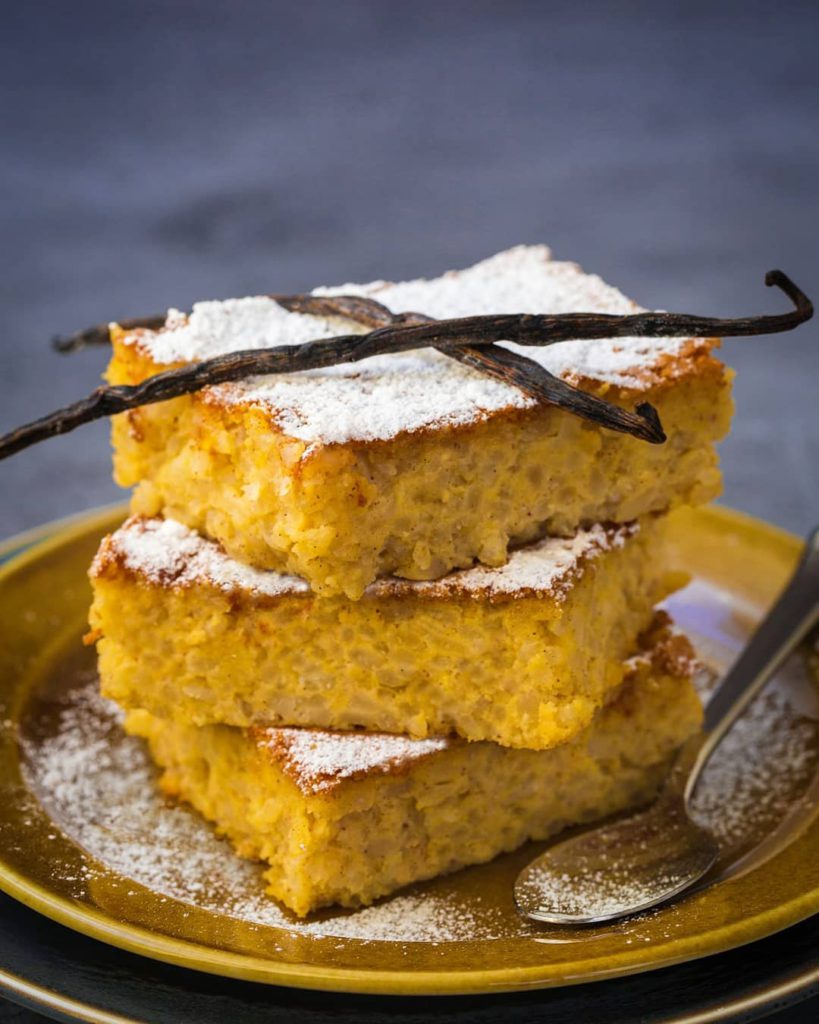
Rice Cake | Ph @bombologna
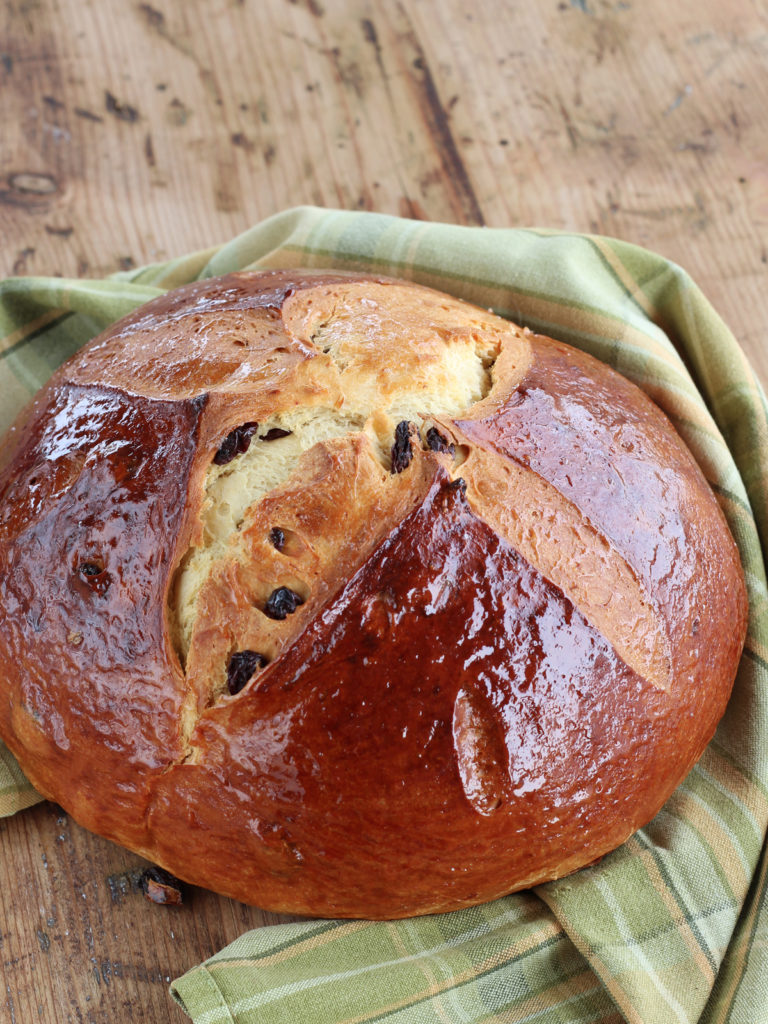
Romagna loaf | Ph @profumodilimoni
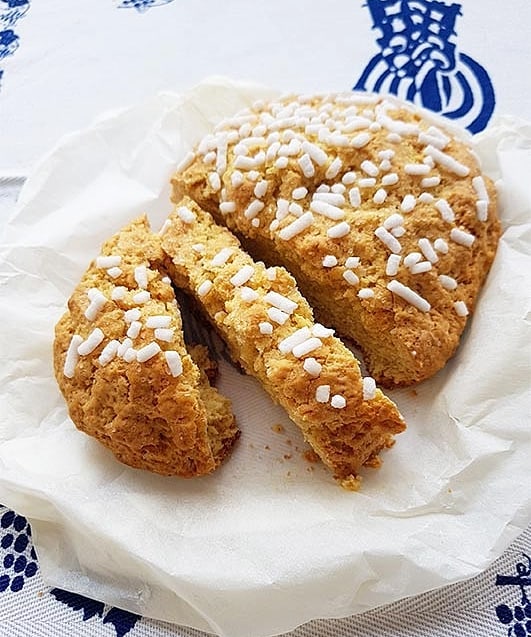
Romagna Ciambella | Ph @bettinaincucina
The recipes are within everyone’s reach and can also be prepared with children.
Latte in piedi | Piacenza
Piacenza: Latte in piedi is made to say good bye to the winter
The city of Piacenza, by the Po river, is known for its fine food and wine culture. Latte in piedi or standing milk was prepared over Easter and other Spring holidays, when there is an abundance of eggs in the countryside. The standing milk is found everywhere in Emilia Romagna, but above all in the Piacenza area. Difficulty level: medium. Satisfaction? Top.
Ingredients (4/5 servings)
500 g of fresh whole milk, 4 organic eggs, 80 g of sugar.
For the caramel: 400 g sugar, 200 ml water.
Preparation
In a bowl, whip the eggs and sugar properly for three to four minutes. Meanwhile bring the milk to a boil in a saucepan. Remove the milk from the heat and let it cool down. When it has cooled down add into the bowl with the egg cream. Now prepare the caramel with water and sugar in this way: in a fairly large pan with a thick base, gently heat 400 gr of sugar over a low heat. In another saucepan, boil 200 ml of water. It is important to boil the water, because if you mix it cold with caramel, the latter, instead of mixing with it, would solidify.
When the sugar has caramelized reaching the typical brown color, add the boiling water directly to the pan and stir quickly. Remove the caramel sauce from the heat, stir briefly and let cool. In any case leave it soft.
Turn on the oven at 180 degrees; take a ceramic bowl and put the caramel on the bottom. Then add the previously prepared mixture. Put the bowl in a larger bowl full of water until 3/4 of the height. Bake your cake in this water bath. Let it cook for about 50 minutes. Check the cooking with a toothpick.
Let it cool completely before turning it upside down on a serving plate.
Maria Luigia Cake | Parma
In Parma the luscious Duchess Cake is the most beloved in town
If you want to impress your friends at the next online cake challenge, go for this recipe. In the elegant city of art of Parma (where the worldwide famous Ham is made) everybody at Easter will have the Duchess Cake. The cake bears the name of the Duchess Maria Luigia of Austria (Napoleone’s former wife).
She was literally adored by Parma citizens during the years in which she ruled the small Grand Duchy of Parma from 1814 to 1847. This sweet was the favorite dessert of the Grand Duchess.
Ingredients
100 g hazelnut flour, 100 g butter, 320 g sugar, 150 g 00 flour, grated lemon peel, 275 g dark chocolate, 300 g cream, 200 ml milk, 140 g yolks (8 large or 9 small yolks), 1 vanilla bean, 100 ml Marsala wine, 50 ml zibibbo (Sicily sweet wine), candied cherries to decorate.
Preparation
Hazelnut paste discs
Mix the hazelnut flour with 100 grams of sugar, butter, 100 grams of flour and the lemon peel. Mix until you get a rather hard paste. If it is too thick, add an egg to soften it. Leave it cool in the fridge. Once taken out of the fridge, roll it out with a rolling pin. With the help of an upside down cake pan make three identical discs. Bake for 30 minutes at 160/170 degrees. Then let cool down.
Custard
Heat the milk with 50 grams of cream and also the vanilla bean. Aside, whip 50 grams of yolks with 100 grams of sugar and 20 grams of flour. When the milk is boiling, add it to the cream and stir 1 minute.
Chocolate ganache
Gently boil 250 grams of cream, turn off the heat and pour in the chocolate so that it can melt. Now add 200 grams of the custard (made before) in order to obtain the cream for the filling.
Zabaione (eggnog)
Boil Marsala wine with the Zibibbo wine. Aside, whip the remaining yolks with 120 grams of sugar and 30 grams of flour until you get a frothy and soft cream. Throw the cream into the marsala, and as soon as the boil resumes, turn off and let it cool.
Assemble the cake
Take a disk of hazelnut paste, put it on a flat plate and spread a layer of cream. Place the second disk and with the pastry bag make a circle on the board of the disk: it will be the containment edge of the eggnog in case it is not super dense. Now fill the center with the eggnog. Cover with the third disk, then spread the chocolate cream on the edges of the three disks and fill the cracks. Lay the chopped hazelnuts on the edge of the cake. Make little twists of chocolate cream on top of the first disk as a decoration. Cover with icing sugar. Put on each chocolate twist a candied. Keep in the fridge and take it out at least 1 hour before serving.
Zuppa Inglese | Reggio Emilia
In Reggio Emilia town a creamy Zuppa Inglese is never missing
Just a few simple ingredients and even women who don’t think they are Kitchen queens… can get a great satisfaction. Easter time in the town of Reggio Emilia is still marked by the religious and natural rhythms of its territory: the peaceful Po river plains on one side and the mountains of the medieval queen Matilde di Canossa on the other . A traditional dessert that is never missing at Easter is the Zuppa Inglese. It is a dessert that can be made even at the last minute since everybody has got fresh eggs, milk and flour in the kitchen. So at the end of lunch, you can be sure that a nice Zuppa Inglese will appear on the table.
Ingredients
5 egg yolks, 5 spoons of sugar, 5 rich spoons of flour, 5 little glasses of milk, 1 sachet of vanillin, 1 grated lemon zest, 100 g of dark chocolate, 1 pack of cookies like sponge fingers, a red spirit like alchermes or another red spirit for desserts to give a vibrant shade.
Preparation
Whip the yolks with the sugar until they get frothy and almost white. Slowly pour them in the flour, now (always slowly) add the milk as well, then the lemon zest and the the vanillin. Put in a pan and cook this mixture while stirring with a wooden spoon until the cream thickens but without boiling. Now soak the cookies (the ladyfingers) in the liqueur. Prepare the mold: put a layer of soaked cookies, cut into two or three parts, on the bottom of the mold. Now put a layer of yellow cream. Cover the cream with another layer of soaked ladyfingers. Now add the remaining dark chocolate (previously powdered in the mixer or with the grater) to the yellow cream and pour a layer of this on the mold. Complete with a layer of ladyfingers. The cake will be placed in the refrigerator. Before serving it, you can still sprinkle it with alchermes red spirit or a mixture for desserts as desired.
Colomba Cake | Modena
In Modena when you cut the Colomba of Pavullo, it is definitely Easter
Pavullo is a lovely mountain village with a beautiful castle, nestled on the Modena Apennines. Here Easter has always been celebrated with a special Colomba cake (colomba means dove, symbol of peace), whose recipe has been handed down from generation to generation. It is not just an usual Easter dove cake! This is a composed of several layers, stuffed with pear and apple jam and enriched with pine nuts and raisins. With a little effort everyone can prepare it and proudly bring it on the table.
Ingredients
One kilo of 00 flour, 500 gr of savôr (it is a traditional Emilia Romagna delicacy, a wine jam with the addition of fruit, but a plum jam is also fine), 150 gr sugar, 100 gr baking powder, 150 gr butter, 100 gr raisins, 100 gr pine nuts, 100 gr Marsala wine, 250 gr milk, three eggs, a teaspoon of grated lemon zest, salt.
Preparation
In a bowl, melt the yeast with half of the milk and then mix together with the flour to get a dough of the right consistency. Make a cross cut on the surface, cover the dough with a layer of flour : it must be high as a finger and leave the dough to rest and rise in a cool place. After eight to ten hours, knead it again with the remaining flour and milk and leave it to rise again for the same time. The dough thus obtained should be mixed with sugar, butter, Marsala wine, eggs, salt and lemon zest, until you get a smooth and well blended mixture. Cut the dough into four-five parts and make as many discs about one cm high. Grease a cake pan (if you don’t have a dove-shaped mold) with high edges, coate it with the first disc: it will be a little larger than the others. Now fill it with a generous layer of savôr (the jam), raisins and pine nuts. The cake must be filled no more than two thirds. Complete with a disc of dough and let rise again in a cool place. When the cake is well swollen, brown the surface with a little egg yolk and sprinkle it with sugar. Bake (180°) for about 30 minutes.
Rice Cake | Bologna
In Bologna, the Rice Cake has been prepared since the 1400s
Gluten free and yummy. Without flour and without yeast, with a luscious consistency that melts in the mouth. This is the I.D. of Bologna Rice Cake, a dessert that has been prepared since 1400 in the magnificent town of the longest porticoes of the world. The Rice Cake was made to celebrate the merry spring-holidays: Easter of course, and also Corpus Christi in May. Rice cake is very easy to prepare, but there is a secret: it must be cooked slowly, very slowly, in vanilla flavored milk. It is the perfect cake and it is tasty also the next day.
Ingredients (for a 24 cm cake tin)
850 ml whole milk, 200 g rice (best are Arborio or Vialone nano), 200 g caster sugar, 50 g minced almonds or almond flour, three eggs, grated peel of a lemon, vanilla (a spoonful of extract or one sachet or also the seeds of a berry), a cup of Amaretto di Saronno almond liqueur (or other), 50 g of candied citron or raisins, icing sugar to decorate
Preparation
Heat the milk with vanilla and half the sugar.
When it starts to boiling, add the rice, stir and lower the heat. From then on, the rice must simmer gently for about 1 h (turn from time to time), i.e. the time it takes for the rice to absorb all the milk, melt and turn into a delicate cream. Now leave aside to cool, stirring occasionally. When the rice and milk cream has cooled down, whip the eggs with the rest of the sugar and the grated lemon peel. Now add the cream of rice to the whipped eggs, incorporating it from top to bottom. Lastly, add the powdered almonds with gentle movements from the bottom up. At last add the liqueur (which can be replaced, if desired, with an orange juice). Now pour it all into a floured and buttered pan, or use the baking paper. The rice cake must bake in the preheated oven at 180 degrees for about 50 minutes. The proof of the cooking will be a toothpick: the cake must be soft and with a nice browning on the surface, if it is liquid, it will have to cook a little more. Once baked, it should be left to cool thoroughly. Then it can be decorated with sugar or whatever and then cut in many single little squares.
Easter sugars | Ferrara
Ferrara, the town of Lucretia Borgia celebrates with the Easter sugars
In Ferrara, the glamorous Renaissance town of Lucretia Borgia, the typical Easter sweets have a Jewish origin. Since the Middle Age Ferrara hosted a Jewish settlement in the heart of the city, it remained alive until the Shoah persecution. The Jewish community used to live around via Sabbioni (today via Mazzini), where there were many little shops. The coexistence between the town and the settlement ended up influencing the language and some food dishes. This is the case of Ferrara Easter sugars. They were prepared in the days preceding the Jewish Pesach. Today it is a typical Easter delicacy of the town.
Ingredients
10 egg yolks, 5 egg whites, 15 tablespoons of sugar, 15 tablespoons of oil between sunflower seeds and extra virgin olive oil, a pack of flour, to be used as needed.
Preparation
Whisk the egg yolks with the sugar, then gently add the other ingredients: the previously whipped whites, then the flour (less than a kilo) in order to get a soft dough. Knead with greasy hands. The dough will be then divided into various cords which are then cut with a knife to create little donuts. If desired, you can place the dough on the tray by spoonfuls. Bake at 180 degrees for about 15 minutes or until putting on a fork or a toothpick, it is dry.
Gialletti | Ravenna
In Ravenna you will be offered two Piadòt with a glass of Sangiovese
Have fun in baking this delicious pick-me-up after dinner. Ravenna, the capital city of the Western Roman Empire, is still surrounded by a Byzantine and mysterious atmosphere (there are 8 UNESCO sites in town!). The recipe of the Gialletti (Piadòt in Romagna dialect) is centuries-ancient. Piadot are sweet yellow cookies (because of the corn flour), baked over the Easter festivities.
Ingredients
450 gr corn flour, 200 gr white flour, 2 eggs, 150 gr butter, 200 gr sugar, vanilla, salt, ½ lemon, 100 gr raisins, pine nuts.
Preparation
Mix all the ingredients together with grated lemon zest. Last add 100 gr raisins and 100 gr pine nuts. Divide the dough into many small loaves as large as a tangerine, place on the tray or pan lined with oven paper or lightly buttered, in a very hot oven (at least 200°) for about half an hour. If you want to enjoy them like a local, serve the Piadot with a glass of Sangiovese, Ravenna most famous wine.
Romagna loaf | Forlì-Cesena
In the Forlì Area the Romagna loaf has a cross-like cut as a sign of devotion
The tasty Romagna loaf is part of the local culture since ages. The Romagna loaf is prepared in the days before Easter. The making takes two days at least. On Easter morning it will be enjoyed together by all family members with blessed eggs, salami, Sangiovese wine, while chatting and making good wishes. The Romagna loaf has a beautiful dome shape and a cross on the top as a sign of devotion. It is typical of Sarsina, a little village (where Plauto, the Roman writer, was born in 255 BC) on the hills of Savio Valley near the Casentinesi Forest National Park.
Ingredients for a 1.7 kg Easter loaf
For the leavened dough. 200 g of refreshed mother yeast, 250 g flour, 150 g. Manitoba flour, 220 g water
For the dough: leavened dough, 200 g type 1 flour, 200 g manitoba flour, 110 g. sugar, 10 g. malt, 100 g. fresh milk, 3 eggs, 80 g. butter, grated zest of 1 lemon, seeds of 1 vanilla bean, 1 teaspoon salt, 200 g raisins.
To brush: 1 egg yolk, 2 tablespoons of milk.
Preparation
Start with the leavened dough. In a bowl, put the mother yeast refreshed about 4 hours in advance, add the 2 types of flour, the water and knead until you get a homogeneous dough. With a knife cut a cross on the surface of the dough. Then cover it with a plastic wrap and leave to rise all night until doubled. It can be left in the oven with the light off.
After the first night: the dough. The next morning, put the leavened dough in a bowl together with the flour, sugar, malt and milk. Knead and add the eggs, one at a time, until they are well incorporated into the dough. Add the grated lemon zest, vanilla seeds, salt and the butter in small pieces, at room temperature. Knead until a smooth, homogeneous dough is obtained. Leave it to rise covered with cling film or a dish towel in the oven with the light on for 6-7 hours (until it has doubled in size.
After 7 hours. Put the dough on a floured pastry board, and deflate it a little by making little folds. Now add the raisins (after you have washed and soaked them for 10 minutes in warm water). Now lay the loaf on a baking tray lined with oven paper, cut a cross on the surface with a cutter and let the loaf rise again for another 2 or 3 hours covered with a bowl. It will have to double in volume
After another 3 hours. Whip an egg yolk with the milk and with this sort of mixture brush the surface of the loaf. Bake at 180 ° for 15 minutes then lower the temperature to 170 °and continue to bake for another 35 minutes.
After 35 minutes. Take out the loaf from the oven, cool on a wire rack and finally serve.
Ciambella | Rimini
In Rimini every family challenges each other on the best Zambela
This cake is a breeze for bakers of all level. But the result is a crowd pleasing dessert. When Easter is coming, in Rimini town, lovely seaside resort and a city of art, the typical Ciambella (a tasty donut) is never missing on the table. Ciambella is named by Romagna locals zambela or brazadela. Each family gives it a personal touch that can be a decoration of icing sugar or granulated sugar or even chocolate. What is sure is that every moment is good, and above all Easter, for a slice of Ciambella soaked in two fingers of Sangiovese wine. Ciambella is on sale everywhere in town, but since it is rather simple to prepare don’t wait and … turn on the oven!
Ingredients
250 g of flour, half a sachet of baking powder, 30 g of butter, 2 eggs
100 g of sugar (plus some to be sprinkled on the top at the end), peel of 1 grated lemon, some warm milk to knead the don
Preparation
In a bowl (must be large enough) gently whip the eggs with the sugar, add the grated lemon peel. Now add the flour and yeast and mix all together. Melt the butter and add it to the mixture. Last a bit of lukewarm milk, just enough to make the mixture soft and sticky. Line a plate with oven paper, pour the mixture and shape two donuts with your hands. Sprinkle the donuts with sugar and bake at 180 degrees for 30-35 minutes. The golden rule to understand whether it is cooked or not? A toothpick: pick the pastry with a toothpick and if it will come out dry, then the donut is cooked.
Author

Daniela Camboni
Journalist and mum.
Traveller. I adore happy endings.
You may also like
Emilia at the table: 5 foods you must try if you’re visiting Emilia
by Marco Bresolin /// July 19, 2017

Interested in our newsletter?
Every first of the month, an email (in Italian) with selected contents and upcoming events.
